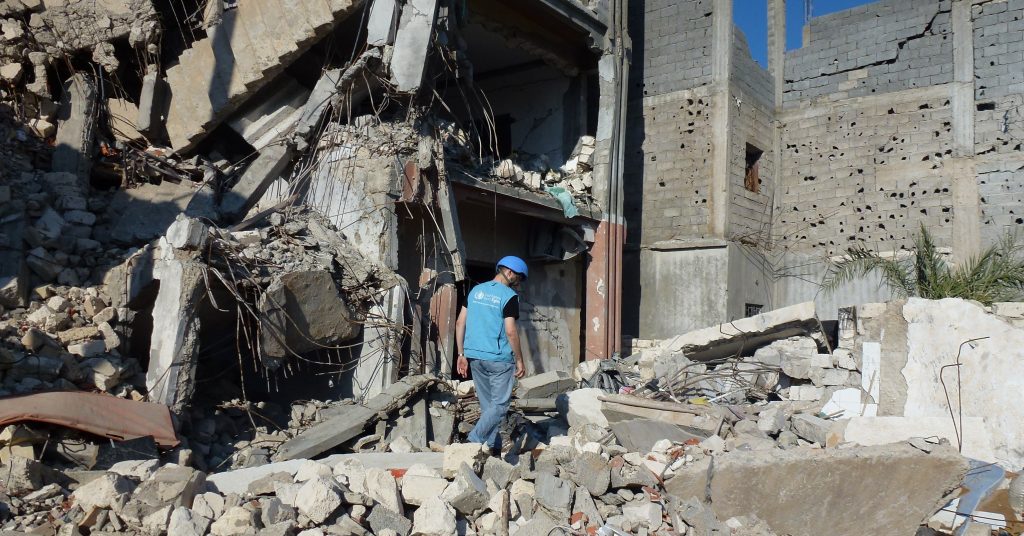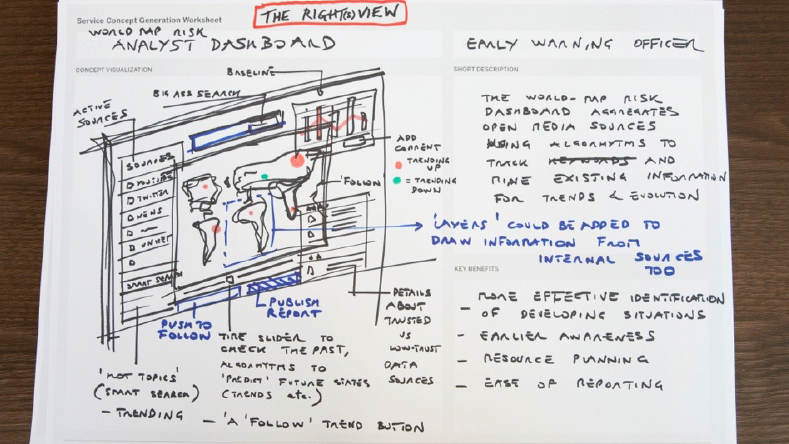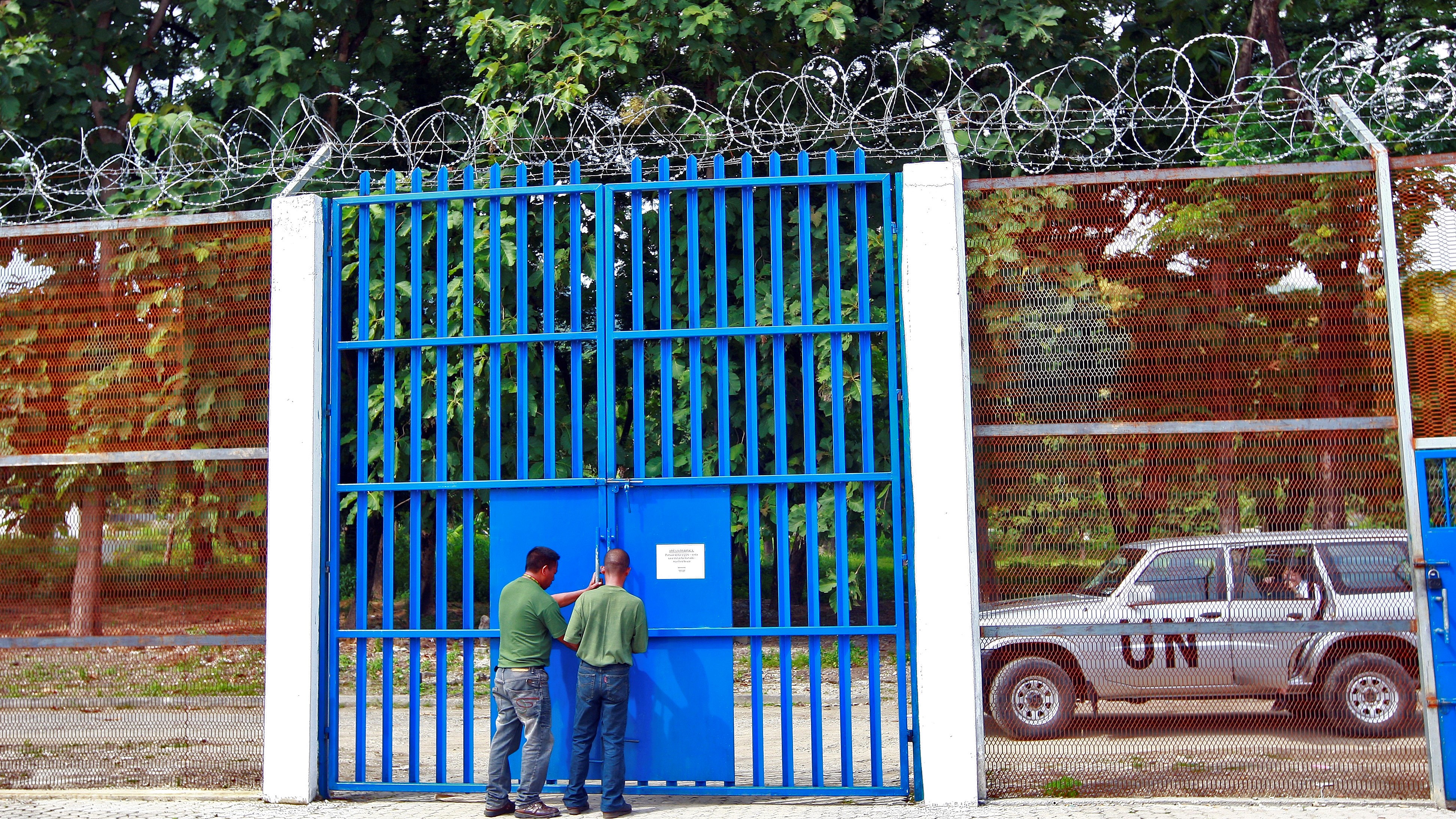
Technology helps the UN advance the protection of human rights in new ways
Globally, human rights abuses tear apart lives, families and nations. Ensuring justice and reconciliation — and intervening early to prevent atrocities — is in the hands of the United Nations. But how can the UN know when human rights are in the balance?
Ahmed Motala leads one of the teams at the UN Human Rights Office tasked to find out. In places like Syria, Burundi and Sri Lanka, these teams are part of the world’s early warning systems. Eyewitnesses and field staff collect information and pass it on to human rights officers, who build up a picture of what is happening before calling on governments or the UN to intervene.
“It’s about putting this jigsaw puzzle together,” Motala says.
Motala recently supported the Office’s investigation on Sri Lanka. For over a quarter of a century, the island in the Indian Ocean was embroiled in bitter and bloody civil war, which left as many as 100,000 people dead. Technology was vital for helping him and his colleagues put the pieces together. “We are able to find leads on what may be happening,” he says. With a smartphone, anyone can be a human rights defender. “Often people in very remote places have mobile phones that have a good camera and the possibility of uploading.”

The UN Human Rights Office has over 1,000 staff worldwide, working at every level from gathering reports in conflict zones to advocating at the UN Security Council. Technology can overcome physical barriers to access, let human rights defenders communicate securely and help verify reports of abuses. That’s one of the reasons why Microsoft is launching a five-year partnership with the UN to support its vital work in this field.
“New technologies are advancing so rapidly, and companies like Microsoft can advise us on how to use those technologies to protect human rights,” says Zeid Ra’ad Al Hussein, UN High Commissioner for Human Rights. Boosting his staff’s capacity to process data will make for speedier responses. A dashboard that Microsoft is helping to develop and deploy will pull in, process and compare various sources of information. Artificial intelligence and big data analytics can assist in verifying alleged human rights abuses by cross-checking against other data sets as well as searching for additional clues.
“One of the big challenges for us is, how do you develop the tools to gather information when you don’t have access?” Motala explains. With Sri Lanka, despite a UN resolution with a “very clear request to the parties to provide access, they refused — the former president even issued a public statement saying they would not cooperate with the investigation.”
Enter the power of data to find the human rights jigsaw pieces. People sent thousands of photographs and hundreds of hours of video that teams like Motala’s have to assess, along with written eyewitness accounts of what happened. Before placing them into the story, investigators must ask: Are they true? Old images may have been reused, Photoshopped, misattributed or have doctored data.
“What is fake, what is true? That’s a question we ask ourselves on a regular basis,” Motala says. Staff across the UN have received training to gauge photo and video materials to see if they’ve been altered. “We’ll get allegations like that, a video saying this is Boko Haram in Nigeria,” says Scott Campbell of the UN Human Rights Office’s Africa desk. By looking at factors like date and time, identifying the location, and checking weather conditions against records, “you say, well, wait a minute, this is a photo from 1998 in Latin America.”
Once photos are established as reliable, it’s time to place them in a narrative. “A shocking photograph of dead bodies has to be carefully analyzed to see if it discloses any clues,” Motala says. It’s a matter of searching through swathes of data for related images showing an aircraft, a gun, a bomb or a sign of whether the people involved are combatants or civilians. This is both difficult and time-consuming. Technology will be able to help the UN to sort the signals from the noise, identifying relevant points in the ever-growing quantity of digital evidence.
In Sri Lanka, there were allegations that cluster bombs had been used — so an image of a bomblet, for example, could be crucial. “What we are hoping to develop is a tool that will help us categorize photographs,” Motala says, “so if I receive thousand images and put them through the system, I can ask for ‘bomb’ and the system will pull out all the photos showing a bomb.”
All of these methods accompany more traditional tools like processing reports from media and other UN agencies, as well as human rights NGOs. In the age of social media, some clues are also provided by human rights abusers themselves. “Many perpetrator organizations are putting up a lot of information about their own exploits as part of the propaganda war,” Motala adds — and that information also needs verification.
Solving any puzzle is easier if you arrange the pieces first, and one of the first projects of Microsoft’s partnership with the UN Human Rights Office does just that. Rights View is an information dashboard that pulls together information from various sources. The idea was born in a brainstorming session at a UN Human Rights Office workshop on ICT for Human Rights back in 2013, from an idea scribbled by the participants showing the information needed to predict and assess crises.

Rights View will draw together internal data from across the various areas of the Office, including information collected by UN Human Rights Office field staff, and external public data, as well as social media. “By bringing this information together, we will be able to better analyze it and to promote action in relation to early warnings of human rights risks,” says Andrew Palmer of the Office’s Emergency Response Section. The overall aim is to “provide a clear human rights perspective on potential, emerging or ongoing crises, and to get the appropriate responses to them by engaging other parts of the UN and the international community more broadly.”
“We’ll also have a simple way of bringing all that information together to more easily produce reports, speaking points and briefings to bodies such as the UN Security Council,” he adds. “And it will enable us to create short, pithy, visually compelling information to have a more immediate impact on the situation.” The tool will also help the UN Human Rights Office to be more efficient at deploying its own staff to emergency situations, he adds. “Having the dashboard will mean there is a single, go-to source for country-specific information, which will ensure that staff hit the ground running.”
And when the Office is unable to deploy staff directly to countries of concern, Rights View will enable the Office to more efficiently monitor, analyze and report on the situation remotely, as the Office has recently done in relation to the human rights situations in southeast Turkey and northern Rakhine in Myanmar. “There is a wealth of information that can be drawn upon to better understand the human rights situation within a country from the outside, and the dashboard will improve our ability to do this,” Palmer adds.

Taking action is at the heart of the partnership for Microsoft. “There is a great untapped opportunity for us to use technology in new ways to protect human rights around the world,” says Microsoft President Brad Smith. “Data science and analytics can empower the UN Human Rights Office to both pinpoint the problem and understand what needs to be solved.”
As Microsoft works on new ways to help the UN find the pieces in the human rights puzzle, it reinforces the need for businesses around the world to engage in the issue. “As a global company, our business suffers when people suffer,” Smith adds. “We believe that the business community can be a constructive voice for the protection of human rights everywhere.”
Lene Wendland, who manages the UN Human Rights Office’s business and human rights team, hopes the partnership will blaze a trail. “We are working with Microsoft to also engage with a much broader range of companies to discuss the UN Guiding Principles on Business and Human Rights, which is our main normative framework when dealing with companies,” she says. “Private companies, in their own right, independent of what states are doing, have a responsibility to respect human rights across their operations, but many companies still find implementation of this responsibility to be challenging. Through peer-learning workshops for companies convened together with Microsoft, we want to support companies in overcoming challenges of implementation.”
Policies on non-discrimination, for example, are key. “What we are expecting any company to do is not just look at the obvious ones, but there might be other salient human rights risks, which you only identify if you go out and look for them,” she says. She also points to the wider trend of companies putting human rights at the core of their work, creating valuable allies in an era where many states “don’t always do what they commit to with regards to human rights.”
The power wielded by large companies can be an enormous incentive for everyone to do the right thing. “It’s super important to have corporations of all different sorts involved in human rights in Africa,” says Campbell. “When corporations step in and put up their own obligations around human rights and do that hand-in-hand with the governments of countries where they’re operating, they can be an incredibly strong ally in the human rights movement.”

Getting the right pieces to complete the human rights puzzle will become easier with Rights View. That’s just the beginning. The potential of artificial intelligence and big data analytics is in its infancy: The best intervention from the UN is one that stops the human rights crisis from occurring. And by increasing the digital capacity of human rights organizations, ordinary people will be able to participate even more effectively in human rights monitoring and reporting.
“I believe that Microsoft technology can definitely help advance the UN’s protection of human rights, but so can technology from many other companies,” says Smith. “The more we can generate support, the better the protection of human rights will be served.”
That’s something that’s needed now more than ever.
“In today’s world, the universality of human rights and respect for the institutions and norms, is really being put into question,” Campbell says. “We haven’t been using technology enough, and the Microsoft project will really bring us up to speed.”
Lead photo: A human rights officer walks over rubble and shattered concrete after a night of shelling in the residential neighborhood of Arada, Libya. (Photo courtesy of OHCHR)














